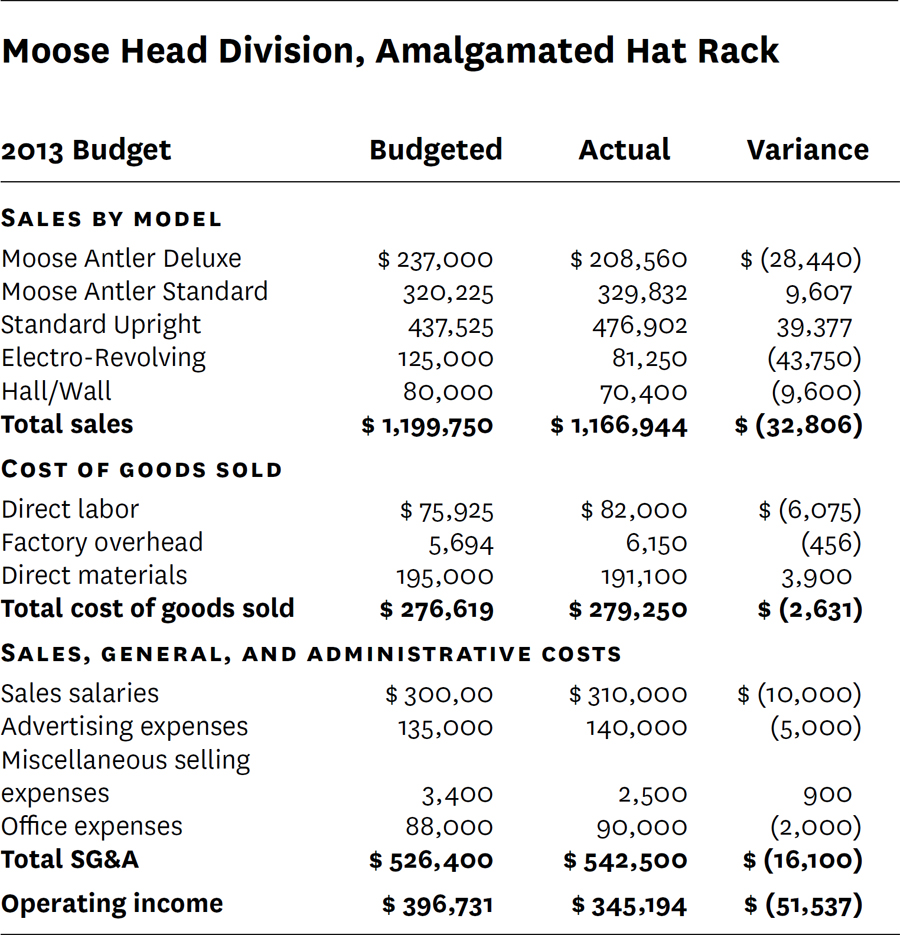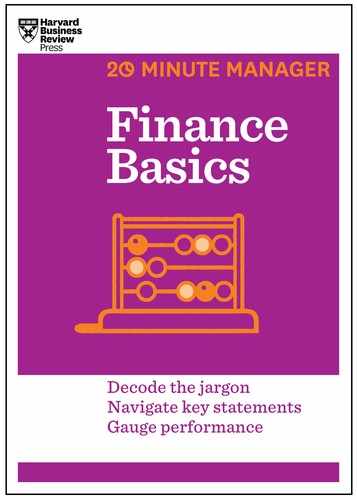Preparing a Budget
A budget is a financial blueprint for achieving business goals. Your unit’s budget is part of the company’s overall strategy, so you need to understand the company’s strategy in order to create a useful budget. There are several steps you can take to increase your strategic understanding:
The audience, not the presenter, is the heart of any presentation. To figure out what makes it tick, answer these questions:
• Pay attention to communications from senior management. Most companies try to communicate at least the basics of their strategy to the entire organization.
• Watch the overall economic picture. A company’s strategy during a recession will differ from its strategy in a booming economy. Listen to your manager’s and colleagues’ views on sales and the economy, and make your own observations as well. Are you deluged by résumés, or is good help hard to find? Are prices rising or falling?
• Stay on top of industry trends. Even when the economy is booming, some sectors may be in trouble. Your budget should reflect realities in your own industry.
• Steep yourself in company values. Every company has values, sometimes formalized and sometimes just “the way we do things around here.” Savvy managers factor those values into their decisions. Say your budget calls for layoffs. If the company views layoffs as counterproductive, your proposal will be dead on arrival.
• Conduct SWOT analyses. What are your company’s strengths, weaknesses, opportunities, and threats? Keep them in mind as you build your budget.
All these techniques should help you understand the context in which you’ll develop your budget.
Top-down versus bottom-up budgeting
In top-down budgeting, senior management sets specific goals for such items as net income, profit margins, and expenses. Each department may be told, for example, to limit expense increases to 6% above the previous year’s levels. As you prepare your budget, observe such parameters and look at the company’s overall plans for sales and marketing and for costs and expenses. Those objectives provide the framework within which you must operate. For instance, many companies strive to improve profitability every year by reducing expenses as a percentage of revenue.
In bottom-up budgeting, managers aren’t given specific targets. Instead, they put together budgets that they feel will meet the strategic needs and goals of their respective departments. These budgets are “rolled up” into an overall company budget. The company budget is then adjusted, with requests for changes sent back down to individual departments.
This process can go through multiple iterations. Often it means working closely with departments that may be competing against yours for limited resources. It’s good to be as cooperative as you can during this process, but don’t hesitate to lobby aggressively for your own unit’s needs.
Getting started
Budgets should be ambitious but realistic. Don’t map out a budget that you can’t meet—but don’t underestimate the possibilities. Here’s how to begin.
First, list three to five goals that you hope to achieve during the period for which you are budgeting. For example:
• Increase gross sales by 5%.
• Decrease administrative costs as a percentage of revenue by 3 points.
• Reduce inventories by 2% by the end of the fiscal year.
Make sure those goals line up with the organization’s strategic priorities.
Next, figure out how you’ll achieve them. (Remember that a budget is just a plan with numbers.) How can you generate more revenue? Will you need more sales representatives? Where can you cut costs or reduce inventories?
The smaller the unit you’re focusing on, the more detail you need. If you’re creating a budget for a 12- person sales office, you typically won’t have to worry about capital expenditures such as major upgrades to the building. But you should include detailed estimates for travel costs, telephones and utilities, and office supplies. As you move up in the organization, the scope of your budget will broaden. You can assume that the head of the 12-person office has thought about printer cartridges and gasoline for the sales reps’ cars. Your job now is to look at big-picture items such as computer systems and to determine how all the smaller-scale budgets fit together.
Other issues to consider when you’re preparing a budget:
• Term. Is the budget just for this year, or is it for the next five years? Most budgets apply only to the upcoming year and are reviewed every month or every quarter.
• Assumptions. At its simplest, a budget creates projections by adding assumptions to current data. Look hard at the assumptions you’re making. Let’s suppose you think sales will rise by 10% in the coming year if you add two more people to your unit. Explain what you’re basing that assumption on, and show a clear connection to at least one strategic goal (in this case, it’s probably to increase sales by a certain percentage).
Role-playing may help you here. Put yourself in the position of a division manager with limited resources and many requests for funding: Under those circumstances, what would persuade you to grant a request for two additional staff members?
Articulating your assumptions
Usually, budgeters take the previous year’s budget as a starting point. If you’re the manager of Amalgamated Hat Rack’s Moose Head Division, for instance, you defensible in light of the company’s strategic goals? might look at the 2013 budget to get ideas about how to increase revenue, cut costs, or both. (See figure 4, “Moose Head Division, Amalgamated Hat Rack.” Note that the parentheses in the table indicate unfavorable variances.)
STEPS FOR CREATING A BUDGET
1. Analyze your company’s overall strategy.
2. If your company does top-down budgeting, start with the targets given to you by senior management. If it does bottom-up budgeting, create targets yourself.
3. Articulate your assumptions.
4. Quantify your assumptions.
5. Review: Do the numbers add up? Is your budget defensible in light of the company’s strategic goals?
FIGURE 4

TIP: TRACK YOUR THOUGHT PROCESS
As you put your budget into the required format, document your assumptions. It’s easy to lose track of them during the budgeting process, and you’ll need to explain them—and revise them.
Don’t look only at specific revenue or cost line items, because revenue and costs are closely linked. Instead, ask yourself what the budget shows about last year’s operations. As the table shows, the Standard Upright and the Moose Antler Standard exceeded sales expectations in 2013. Perhaps it would make sense to increase your sales projections for those products, particularly if your sales reps are optimistic about the prospects for more sales. The Standard Upright might be a particularly good choice, since it beat its 2013 projection by 9%. Could you increase the anticipated sales for this model by 5% or 10% in 2014? How much more would you have to spend on sales or marketing to achieve this increase? To make the decision, you’ll need as much data as you can get about pricing, competitors, new sales channels, and other relevant issues.
Alternatively, you might plan to eliminate some products. The Electro-Revolving model, for example, is faring poorly. Would it be better to cut this line and promote the newer Hall/Wall model? That would eliminate $81,250 in sales, but the Electro-Revolving is expensive to produce, so discontinuation might not have much impact on the bottom line.
Other questions to ask yourself:
• Will you keep prices the same, lower them, or raise them? A price increase of 3% might offset the budget’s 2013 sales shortfall, provided that it doesn’t dampen demand.
• Do you plan to enter new markets, target new customers, or use new sales strategies? How much additional revenue do you expect these efforts to bring in? How much will these initiatives cost?
• Will your cost of goods change? For example, perhaps you plan to cut down on temporary help and add full-time employees in the plant. Or perhaps you hope to reduce wage costs through automation. If so, how much will it cost to automate?
• Are your suppliers likely to raise or lower prices? Are you planning to switch to lowercost suppliers? Will quality suffer as a result? If so, how much will that affect your sales?
• Do you need to enhance your product to keep your current customers?
• Does your staff need further training?
• Are you planning to pursue other special projects or initiatives?
Articulating your answers to questions like these ensures that your assumptions won’t go unexamined. It will help you create budget numbers that are as realistic as possible.
Quantifying your assumptions
Now you need to translate your assumptions and scenarios into dollar figures. Begin with last year’s budget and make the changes that fit your plans. If your entire staff of 12 needs sales training, for instance, find out how much the training will cost and add in that amount. Ask your coworkers for their ideas about costs as well. And consult the websites of trade associations or trade publications for data on industry averages.
Because your budget must be compared and combined with others in the organization, your company will probably provide you with a standard set of line items. When you’ve filled those in, take a step back:
BUDGETING BEST PRACTICES
• Focus on the main goal. If it’s to increase sales, make that the overriding concern of your budget. Don’t let other issues sidetrack you.
• Be realistic. Most managers would like to double sales or cut expenses in half. But remember: You’ll be held accountable for the results.
• Get help. Include your team members; they may have detailed knowledge about certain line items that you don’t. Your finance department can help, too.
• Talk to your staff. Don’t use the budget as a substitute for regular communication with your staff. Team members should hear directly from you about funding for line items that affect them.
Does this budget meet your unit’s goals? It’s easy to overlook big-picture goals as you get into line-by-line details. Is your budget defensible? You may be perfectly happy with it, but you’ll need to win over the budget committee. Once again, push your assumptions. Could you do with one extra staff member instead of two? If not, be sure you can make a good argument as to why not.
